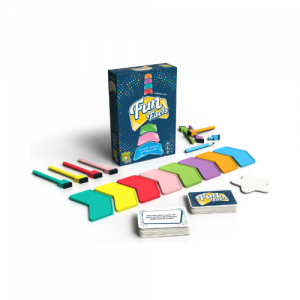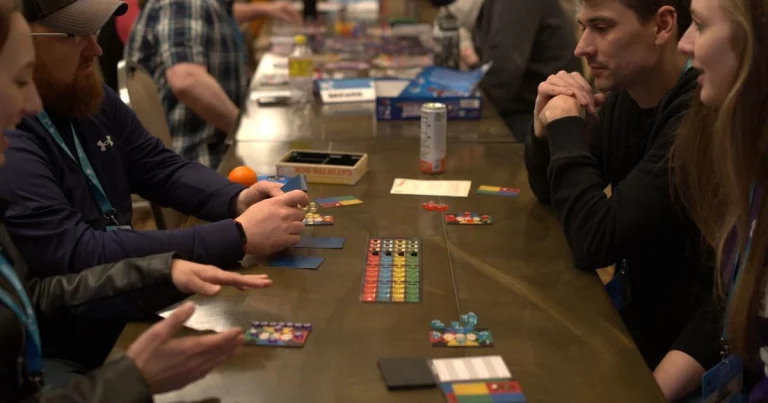Ask any instructor what keeps them up at night, and you’ll hear a common refrain: students just aren’t engaging like they used to. Phones buzz. Cameras stay off. Group discussions stall before they start and engagement in higher education seems to have stalled since 2020.
It’s not just your classroom. Across higher education, data confirm a measurable drop in student attention and participation. University of Houston research found that students with four or more active engagements had a 92% retention rate compared to 78% among disengaged peers.
Those numbers are hard to ignore — and they point to something bigger than short attention spans. Today’s students crave interaction, relevance, and meaning.
Because when learners feel disconnected, they don’t just lose focus — they lose the desire to understand.
Engagement in Higher Education Matters More Than Ever
Professors are fighting a new kind of classroom fatigue — one shaped by digital distraction, information overload, and the passive habits of online learning. Research shows the average adult attention span may only be around eight seconds in digital contexts, raising concerns for sustained focus in lectures.
It’s not that students can’t focus — it’s that traditional delivery no longer competes with the pace of their world.
But engagement isn’t about adding more content or clever slides. It’s about transforming how students experience the material. That’s why so many educators are rediscovering something beautifully simple: PLAY!
Play invites curiosity, creativity, and connection — the exact ingredients that make lessons stick. When students are having fun, they’re not just entertained; they’re neurologically primed to learn.
💬 “Play isn’t a break from learning — it is learning.”
Why It Works: The Learning Power of Play
Play activates the same learning mechanisms educators strive for every day — just through a medium that feels effortless. It bridges cognitive, emotional, and social engagement, helping students move from passive awareness to active understanding.
Here’s why it works:
Active learners, not passive listeners
Games transform learning from something students receive to something they do.
Instead of absorbing information from a lecture, learners are making decisions, solving problems, and analyzing outcomes in real time. That level of active participation creates stronger neural connections — and those connections are what make learning stick.
Research on active learning shows just how powerful this can be. In one large-scale study across 225 college courses, classrooms that replaced lecture time with active engagement saw failure rates drop by 55%. That’s not just better engagement — that’s measurable academic impact.
Emotion fuels memory
When students feel something, they remember it. Laughter, competition, curiosity, or surprise all trigger dopamine, a neurotransmitter that strengthens the brain’s memory pathways.
Games create these emotional spikes naturally — whether it’s the suspense of a reveal, the joy of collaboration, or the satisfaction of solving a challenge. In contrast, purely informational learning often lacks the emotional cues our brains rely on to prioritize and retain knowledge.
As educational psychologist Jan Plass noted, games engage learners “cognitively, emotionally, and socially.” That trifecta is the difference between recalling a fact and understanding it.
Games Promote Cognitive Flexibility and Problem-Solving
Every time students play, they’re training their brains to think on their feet. Games present evolving challenges that require players to adapt, analyze patterns, and make strategic decisions under pressure — all key components of higher-order thinking.
This kind of mental flexibility is what separates surface learning from mastery. As players navigate uncertain situations, they’re practicing skills directly tied to Bloom’s higher levels: applying, analyzing, and evaluating. A single round of play can ask students to test a theory, negotiate meaning, or interpret data from multiple perspectives — without feeling like an exam.
In other words, play turns problem-solving into a natural behavior rather than an assignment. The same creative thinking that helps a player win a game is the cognitive agility that helps a student thrive in real academic problem spaces.
Social connection builds comprehension
Learning doesn’t happen in isolation. Students make meaning through conversation, collaboration, and even healthy disagreement.
Games create structured opportunities for these interactions. Players explain reasoning, test hypotheses, and negotiate outcomes — all critical components of higher-order thinking. This mirrors what Vygotsky described as the Zone of Proximal Development, where learners grow fastest through social exchange.
The result? A classroom that feels less like a one-way transmission and more like a shared intellectual experience.
Abstract becomes tangible
Some concepts are simply easier to grasp when students can see or do them. Games turn abstract theories into concrete systems that learners can manipulate and explore.
A round of play can model complex ideas like resource management, ethics, communication, or probability far more vividly than a slide deck ever could. Students learn not just the “what,” but the “why” and “how.”
As scholar James Paul Gee observed, “Good games create problem spaces that mirror the best learning environments.” When students play, they’re not escaping learning — they’re stepping directly into it.
Play in Practice: Adapting Game Mechanics to Build Engagement in Higher Education
Here’s the best part — you don’t need to overhaul your curriculum to make space for play.
Small moments of interaction can turn a quiet room into a buzzing one. Try starting with five-minute activities inspired by popular social games — reimagined for your field.

Inspired by Fun Facts:
Players secretly write down a personal number (for example, “How many hours of sleep do you get on average?”) and then the group collaborates to line up their answers in the correct order — without revealing their actual numbers. It’s a game about reasoning, assumptions, and perspective-taking.
That same dynamic translates beautifully to the classroom. Instead of personal trivia, use course-related quantitative prompts that invite estimation, prediction, or reasoning:
-
Environmental Science: “How many gallons of water does the average American use per day?”
-
Sociology: “What percentage of college students report experiencing food insecurity?”
-
History: “What year do you think marked the largest migration during the Dust Bowl?”
-
Business or Economics: “Estimate the inflation rate in 1980 versus today.”
Students write their guesses privately. Then, working in small groups (or breakout sections in large lectures), they discuss their reasoning and collaborate to place their unseen answers in order — lowest to highest, earliest to latest, etc.
After locking in the sequence, reveal the real numbers or data points. The moment of discovery — who was right, who was way off, and why — naturally leads into discussion, peer learning, and critical reflection.
→ Outcome: Builds engagement, data literacy, and critical reasoning while prompting students to articulate why they think the way they do.

Inspired by Wavelength:
For this game, the mechanics are all about seeing the same concept from different perspectives. Present a scale-based prompt (e.g., “0 = Pure Logic, 10 = Pure Emotion”) and give them an object that fits on that scale to help them guess a point on the scale. The students will then debate where the object fits within that scale. The objective here is not the answer, but the discussion!
-
Business or Ethics: Rate corporate decisions from “entirely ethical” to “purely profit-driven.”
-
STEM Fields: Position scientific theories from “highly empirical” to “largely theoretical.”
-
Sociology or Communication: Map cultural phenomena from “individualistic” to “collectivist.”
In smaller seminars, groups can debate placements aloud or mark them on a whiteboard. In larger classes, display the scale on screen and have students vote live via a polling tool or hold up numbered cards for an instant visual readout.
→ Outcome: Encourages perspective-taking and critical thinking.

Inspired by Jibber Jabble:
Translate complex concepts into plain language or creative analogies — a playful way to reinforce understanding. You have a group of clue givers and a guesser (or a few). The clue givers have a secret word that they are working to help the guesser to deduce. Without collaborating, the clue givers will spell out a clue by giving letters one-by-one. The guesser(s) get 3 clues and 2 guesses to get it right!
-
Biology: Use secret terms like Osmosis, Mitosis, Enzyme, Homeostasis
-
Economics: Use secret terms like Inflation, Opportunity Cost, Elasticity, Marginal Utility
-
History: Use histo
In small classes, this works as a lightning-round discussion, with peers voting on their favorite analogy. In large lectures, invite volunteers or have students record one-minute video submissions between sessions, then share standout examples next class.
→ Outcome: Strengthens communication, creativity, and mastery of concepts by reinforcing associations.
Even a few minutes of structured play can turn passive observers into active participants — and often, you’ll see the same students who rarely speak light up with insight.
📚 The Science Behind Serious Play
Learning scientists have long recognized what great games do instinctively. When we play, we enter a “safe simulation” of problem-solving — testing ideas, managing uncertainty, and experiencing feedback in real time.
Educational researcher James Paul Gee calls games “problem spaces that mirror the best learning environments.” In other words, games teach the way humans naturally learn — through doing, experimenting, and reflecting.
So, while play might look lighthearted, it’s doing heavy lifting for attention, retention, and motivation.
Engagement in Higher Education is Learning That Sticks
The takeaway is simple: play isn’t extra — it’s essential.
It doesn’t require reworking your entire syllabus or sacrificing content for fun. It just means reframing a few moments of your class to invite curiosity, connection, and joy back into learning.
Start small. Replace one discussion prompt with a quick, game-inspired interaction. Notice how your students respond.
Because when learning feels like play, students don’t just remember the information — they remember the experience.





